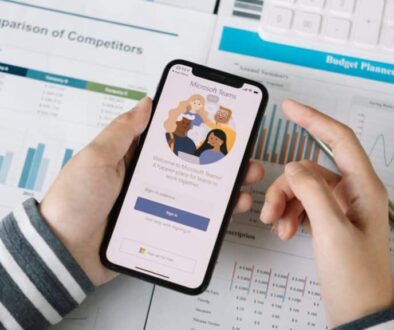Impact of IoT on Customer Experience
Understanding the Impact of IoT on Customer Experience

The Internet of Things (IoT) can improve your customer experience today while also having a significant impact on improving it in the future. And Towner Communications can help.
“How does that work?” you ask.
Become a customer-centric organization
Well, to succeed in today’s business world, companies need to become customer‐centric. Customer‐centric organizations anticipate future needs by looking at behavioral patterns and market trends and leverage data from inside and outside their organizations. They provide unique, memorable experiences that are seamless across all of the possible interaction channels. And, most importantly, customer‐centric organizations define themselves not by the products they make and sell, but by the customers they serve, the customer problems they solve, and the quality customer experience they deliver.
Understanding your customer inside and out so you can anticipate future needs – proactively engaging them, and continually exceeding their expectations – is the most difficult part of becoming a customer‐centric organization.
For almost a decade, “things” – electronics, sensors, and software that can be sensed, monitored, and controlled remotely across network infrastructure – have used the Internet more than people. This network of objects is commonly known as the Internet of Things, or IoT for short. Gartner forecasts 4.9 billion connected things will be in use in 2015, up 30 percent from 2014, and that this number will reach 25 billion by 2020.
The rise of the IoT has accelerated the ability to monitor, measure, and manage customer experience and product use, driving significant change in the way businesses interact with customers, and transforming customer experience forever.
Two examples of IoT-powered customer experiences
Want a simple example? The microchip you can place in your dog can be used to track him and return him to you if he gets lost. Talk about offering a positive customer experience; most dog owners will tell you that their dogs are almost as important to them as their children.
But the IoT can offer so much more. Consider the case of the connected car. Having an Internet‐enabled car is one thing, but the customer experience benefits of a connected car far surpass being able to tap into the Internet for access to cloud‐based music services and navigation. Using sensors installed in cars, drivers can now proactively monitor almost everything in the car, from the engine, to lights, to tire pressure—and then receive warnings and notifications in the event the car needs parts or maintenance. For the customer, the connected car can mean no more getting stranded in the middle of nowhere dealing with car troubles.
And, the connected car is equally important to the car company, since it allows them to collect valuable user and performance data from vehicles that can be funneled back into the design of future vehicles to improve usability and performance.
Turn IoT-generated big data into customer experience opportunity
The IoT gives businesses a new opportunity to use customer data to improve customer experience and proactively improve their product/service.
The key value and challenge associated with the IoT is making sure that the data promptly winds up in the right hands. That is, all these devices are collecting data, but a business needs that data routed to the appropriate person. It’s one thing that the connected car notifies you when your engine needs servicing. But technology designed to leverage the IoT expands the value because it automatically routes the information to the correct area within the dealership (service representative, mechanic, and so on) to contact the customer – by phone, automated email, or text message – to schedule an appointment.
Why IoT matters to your customer experience
Today’s consumer is intelligent and will shop where he can get the best service, the best product, probably at the best price—essentially, the best customer experience.
In today’s digital world, achieving customer loyalty is difficult, but not impossible. Because customers have so much information at their fingertips, they can compare you to your competitors in seconds. Offering an outstanding customer experience can differentiate you from your competition even more than a lower price point.
Businesses must understand mobile consumer behaviors to ensure that they’re positioned for success and can guarantee that customers get the service they expect. Clearly, though, the responsibility for delivering a satisfying customer experience has never been more complex. Businesses must support customers using multiple channels of communication. In addition, with digital devices increasing the speed with which commerce is happening, customers have come to expect instant responses. Today’s organization must adapt to provide a convenient, satisfying and consistent customer experience at all times.
What happens when you don’t?
Customers will share their experiences, especially the bad ones
Mobile consumers have more at the tips of their fingers than just access to the information they want and the ability to execute a transaction at their convenience. They also have the ability to share that experience in real time with their closest friends, who are your customers and prospects. According to We Are Social, nearly one in four people now has an active social media account on his or her mobile device.
In other words, these customers can share their satisfaction or dissatisfaction with countless people in the blink of eye. A negative customer service story on social media can go viral with the click of a mouse or a tap of the finger. And, it’s becoming increasingly clear that customers are powerful word‐of‐mouth marketers.
“A positive customer experience can result in 69 percent of customers recommending a company to others. On the flip side, 79 percent of customers will readily share any negative experience.” —Harris Interactive.
There isn’t a company in the world that isn’t immune to the impact of delivering poor customer experience. With customer advocacy being a crucial competitive differentiator, it’s critical to understand your customer. Figure 2‐3 presents the high priority customers place on the customer experience and the high risk and high cost a business faces if it delivers a poor customer experience.
Today’s customers want and expect:
- Personalized and proactive experiences
- Relevant and timely information
- Quick response times
To understand how you can apply these principles to your business to make a real-world impact, download Customer Experience for Dummies for free today.












